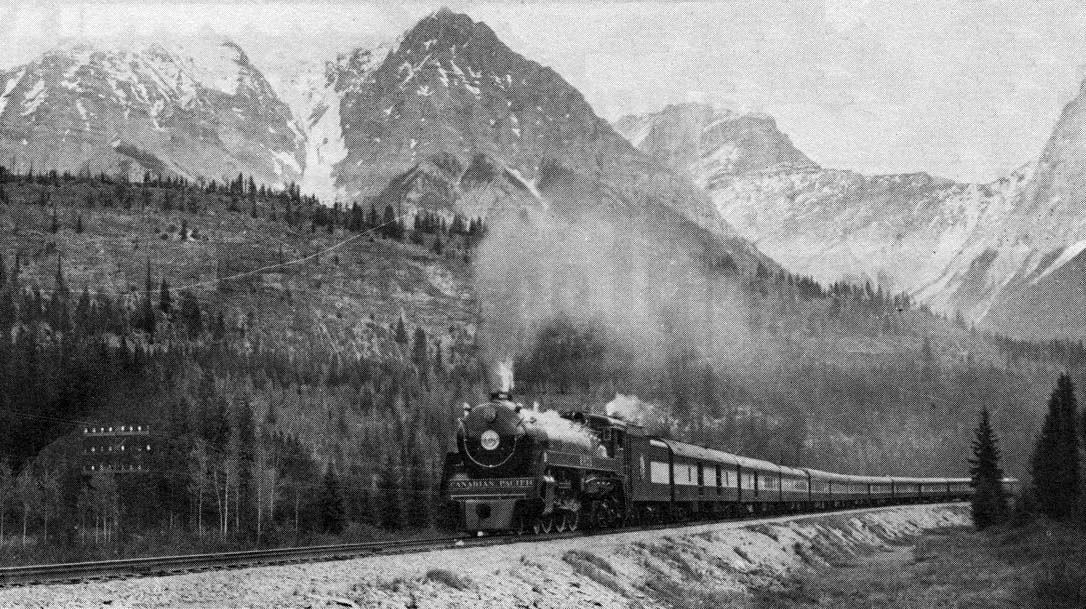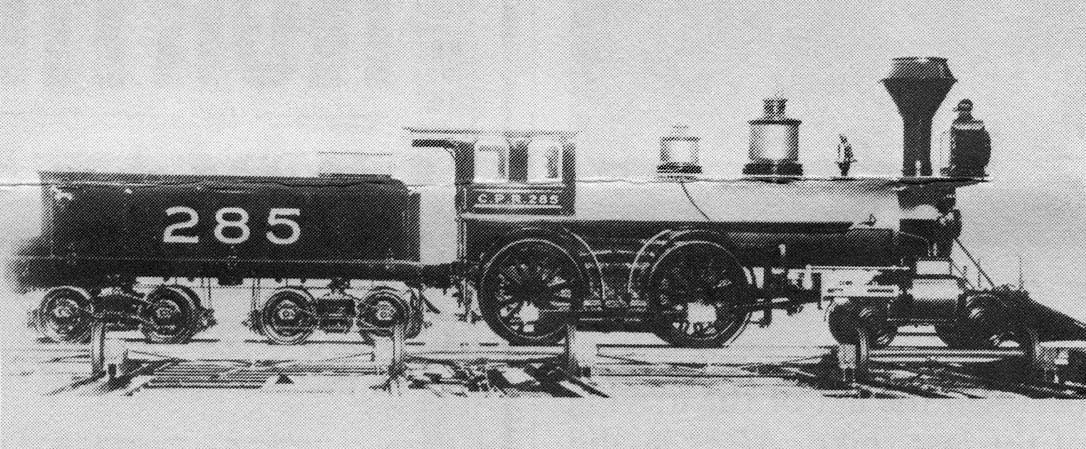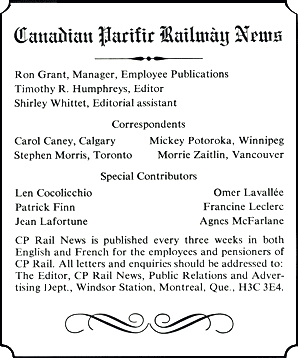
|
VOLUME XI
NUMBER 2 |
FEBRUARY 16,1981 CENTENNIAL ISSUE
|
|

By Stephen Morris
When the last scheduled steam-powered train chugged into Windsor Station from St. Lin, Quebec, 6 Nov 1960, it spelled the end of an era for Canadian Pacific.
It was a sad day for many but not an unexpected one, the younger generation of diesels had, inevitably, taken over the reigns.
The same unique characteristics of the Iron Horse, which charmed early railroaders, poets, and song writers, also limited its life span as a viable form of motive power.
It was hard, dirty work operating a steam-powered locomotive, stoking its fires with coal to maintain a full head of steam being a major task.
Engine crews had to be changed frequently and even if there was more than one locomotive pulling the train, each unit required its own crew. The steam engine's appetite for water and coal also restricted its non-stop range.
Most large railroads built their own steam-powered locomotives and Canadian Pacific was no exception. For the company the locomotive building epoch lasted 61 years (1883-1944) and saw 1,056 of its steam engines come on stream.
During the first 20 years, the company constructed engines at its Delorimier Avenue shop in Montreal. Later, the operation was moved to Angus Shops, a new building and repair facility in northeast Montreal.

But it was at the Delorimier Shop where the CPR built its first steam engine. Number 285 was designed by Francis Brown who in 1833 had been lured from the Grand Trunk Railway to Canadian Pacific by William Van Horne.
The engine was small compared with later designs. It featured a 4-4-0 wheel arrangement, a four wheel leading truck, four drive wheels on the second truck, and no trailing truck, and was designed for passenger and freight service.
By the end of the First World War engines with a 4-4-0 wheel arrangement were a rarity. Most had been scrapped because of their inability to pull the increasingly heavier and longer trains.
But this seeming disadvantage led to the survival of three of these engines built in the 1880s.
Operating on a small branch line in New Brunswick, numbers 29, 136, and 144 survived because of the low traffic on the line and the light rail on which heavier engines could not run. Today, the three engines are preserved in Ontario and Quebec.
In its steam period, Canadian Pacific boasted a fleet of locomotives which featured 20 different wheel arrangements. However, every railway had a class or type of engine which formed the backbone of its fleet.
With Canadian Pacific it was the versatile, sturdy, and reliable D-10 class 4-6-0 wheel type.
Capable of a multitude of tasks, these engines were equally at home on the headend of a freight, mixed and passenger trains, or in yard, pusher, or work service.
Between 1905 and 1913, Canadian Pacific acquired 502 of these engines of which 119 were built by the railway. The D10 class engines could be seen in virtually every roundhouse and yard from the Atlantic to the Pacific.
Canadian Pacific also had some of the most streamlined, stylish engines on the North American continent. Perhaps the best example is the Canadian Pacific 4-6-4 Royal Hudson.
This class of locomotive was popularized by the New York Central, which named it after the Hudson River.
The Hudson-type engines first appeared on Canadian Pacific in 1929 when 20 were built for high speed, heavy passenger runs. Eight years later, the company acquired 45 more of the engines which were semi-streamlined.

In 1939, number 2850 was selected to haul the Royal Train with King George VI and Queen Elizabeth aboard across Canada. The steam locomotive had been refinished in royal blue and stainless steel with a golden crown at the front of each running board.
Subsequently all 45 semi-streamlined 4-6-4s were provided with similar running board crowns and engines of the H, L, C, D, and E class became known as Royal Hudsons.
After the Second World War it became evident that diesel locomotives would replace steam engines in North America. Diesels were easier on the crews and oil was cheap. They had a longer range and could generate more work power. They were cheaper to maintain and operate, and were more reliable.
Canadian Pacific had been experimenting with a diesel-powered locomotive in its yard and switcher service since 1937. Six years later, the company began acquiring production diesels for yard service and in 1948 the first diesel road units came on line.
In 1949, Canadian Pacific took delivery of its last steam-powered locomotive, the 5935, a 2-10-4 Selkirk class unit built by Montreal Locomotive Works. Measuring just shy of a hundred feet in length, these types of engines were the largest and heaviest in the Commonwealth and were assigned to passenger and freight service in Alberta and British Columbia.
Museum pieces at the age of 10, these engines represented the finest technology in steam engine design. But even this technology could not match that of the new diesels.
 and is reprinted here with their permission.
All photographs, logos, and trademarks are the property of the Canadian Pacific Railway Company.
and is reprinted here with their permission.
All photographs, logos, and trademarks are the property of the Canadian Pacific Railway Company.